#tongan artwork
Text
Aloha all!
Just wanted to surf by and say welcome to my page!
If you love sun, sand, surf, and art you've come to the right place.
This is the place where I showcase everything from my hand drawn Polynesian tattoo art to aesthetic island photos.
Why don't you stick around and join the luau :)
1 note
·
View note
Text
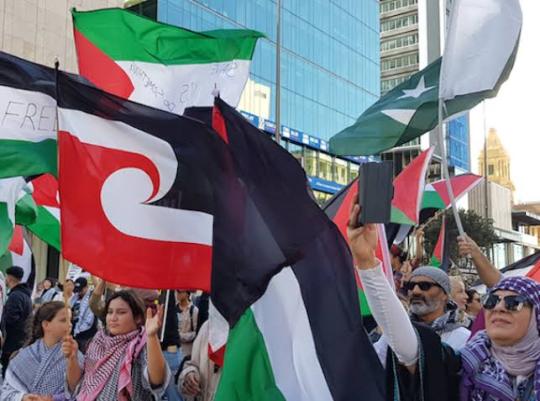
The Māori tino rangatiratanga [sovereignty, self-determination] flag flying alongside Palestinian flags. The tino rangatiratanga flag is black at the top and red at the bottom, the two colours separated by white lines forming a koru (spiral). The Palestinian flag has three horizontal stripes (black, white and green) with a red triangle on the left.
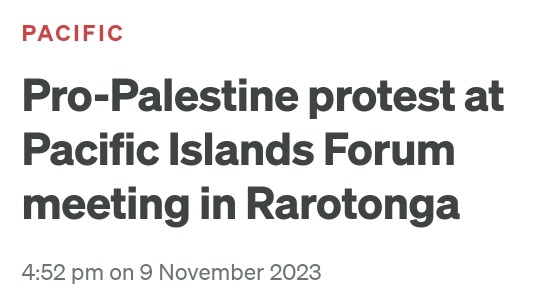
"Pro-Palestine protest at Pacific Islands Forum meeting in Rarotonga"

A young child holding an ili (Samoan woven fan) that says Samoa for Palestine

A young boy holds a sign reading Justice the seed, peace the flower / Ko te mana whakaaiko hei kākano, kia puawai mai te maungarongo. Beneath is artwork of a fist breaking free from chains below blooming flowers.


Left: the 1975 Māori Land March. Right: the 2018-2019 Palestinian Great March of Return.
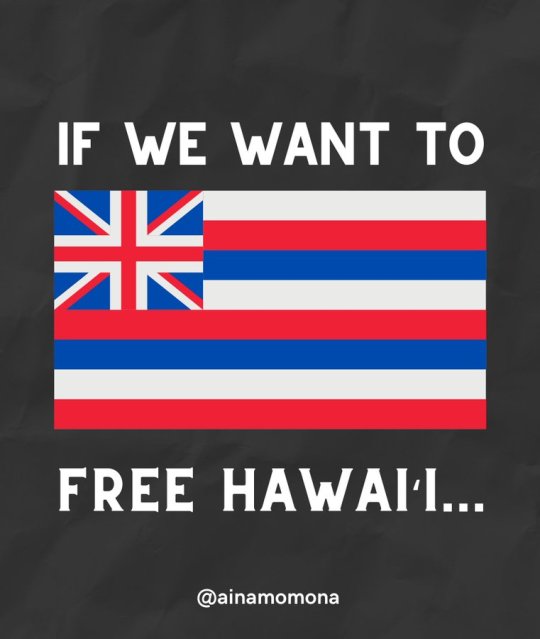

If we want to free Hawai'i... [Hawaiian flag] we must also free Palestine [Palestinian flag]. Credit to @ainamomona

A young Māori boy holding a sign that reads MANA MOTUHAKE [independence/autonomy] 4 PALESTINE

A Fijian woman holding a sign that reads Food is not a weapon of war! Stop starving Palestinians! Behind are two more signs. One says CEASEFIRE NOW and the other says DON'T STOP TALKING ABOUT GAZA
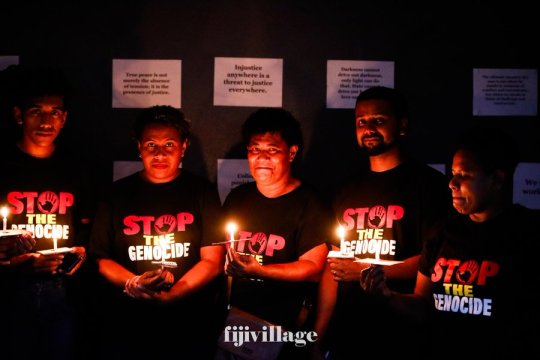
A group of Fijians holding candles and wearing shirts that read STOP THE GENOCIDE
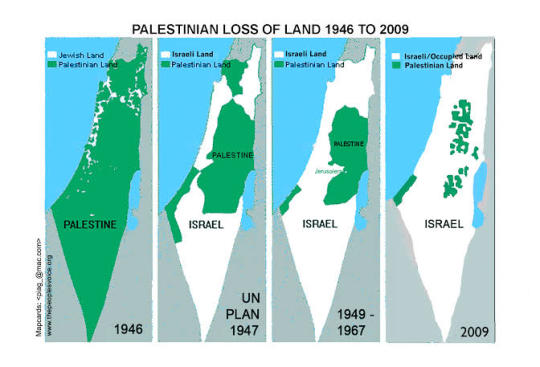
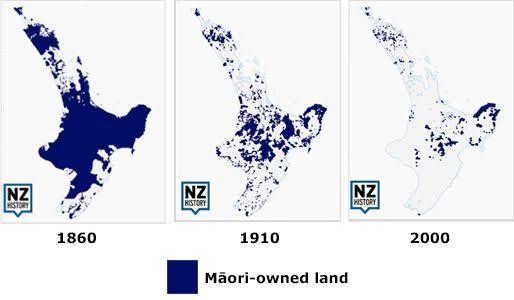
Left: a diagram of Palestinian land loss between 1946 and 2009. Right: a diagram of Māori land loss in the North Island of Aotearoa between 1860 and 2000.

A sign reading TANGATA WHENUA [indigenous people] FOR PALESTINE [tino rangatiratanga symbol, Palestine flag symbol]

Three Pasifika people holding signs. The first says MAI LE VAITAFE AGA'I I LE SAMI! [Samoan: from the river to the sea] FREE PALESTINE! The second sign says FROM OUR PASIFIKA OCEAN TO THE RIVER TO THE SEA FREE PALESTINE. The final sign shows the Palestinian and Tongan flags and says 'OFA KI PALESITAINE [Tongan: Love to Palestine]

A group of Pasifika holding signs and banners. They say "HOW MANY MORE KILLINGS IS ENOUGH FOR YOU?" "KŪ'E! KŪ'E! [Hawaiian: Resist! Resist!] PASIFIKA STANDS WITH PALESTINE" "'OFA KI PALESTINE" "FROM THE PACIFIC TO THE RIVER TO THE SEA, PALESTINE WILL BE FREE" "WHERE IS YOUR HUMANITY?" "SAMOANS FOR PALESTINE" "FROM THE RIVER TO THE SEA" "KŪ'E KŪ'E KANAKA WITH PALESTINE" "FREE PALESTINE CEASEFIRE NOW"

A West Papuan man holding two signs. The first says WEST PAPUA STAND WITH MYANMAR. The second says WEST PAPUA STAND WITH PALESTINE

Two signs. The first says PACIFIC ISLANDERS FOR PALESTINE. The second says #FREE PALESTINE #FREE WEST PAPUA #FREE CONGO #FREE SUDAN

A Palestinian flag decorated with Samoan patterns. Words say 'AGA'I MAI LE VAITAFE E O'O ATU I LE SAMI FROM THE RIVER TO THE SEA #Sāmoans4Palestine
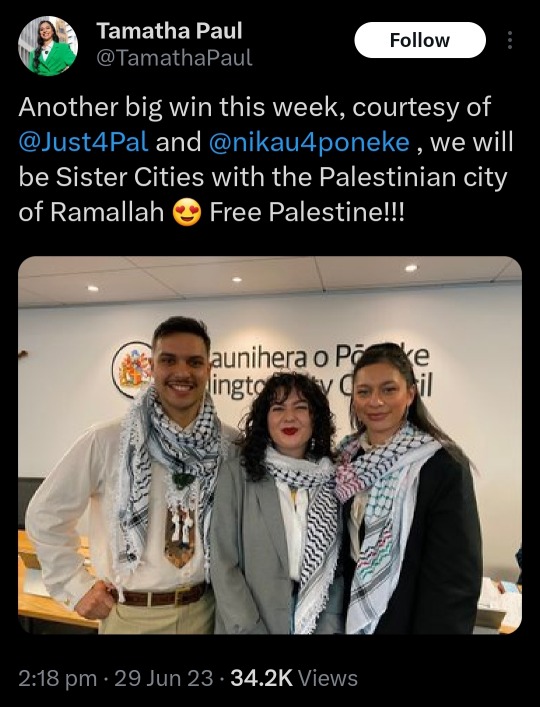
A tweet from Tamatha Paul (Waikato-Tainui, Ngāti Awa) on 29 June 2023. Another big win this week, courtesy of @Just4Pal and @nikau4poneke, we [Pōneke Wellington] will be Sister Cities with the Palestinian city of Ramallah 😍 Free Palestine!!!

A Pasifika woman holding two signs. The first says FREE PALESTINE FREE PALESTINE END THE APARTHEID! END THE BLOCKADE! END THE ETHNIC CLEANSING! CEASE STATE SANCTIONED VIOLENCE! CEASE COLONIALISM! BOYCOTT ISRAEL! From the river to the sea, Palestine will be free! The second sign has pictures of Palestinian and West Papuan flags. It says pacific islanders stand in solidarity with Palestine! #FREEWESTPAPUA #FREEPALESTINE CEASE COLONIALISM

A sign that has the tino rangatiratanga flag at the top and Palestinian flag at the bottom. It says Mai te awa ki te moana [from the river to the sea] MĀORI LAW STUDENTS For a FREE PALESTINE
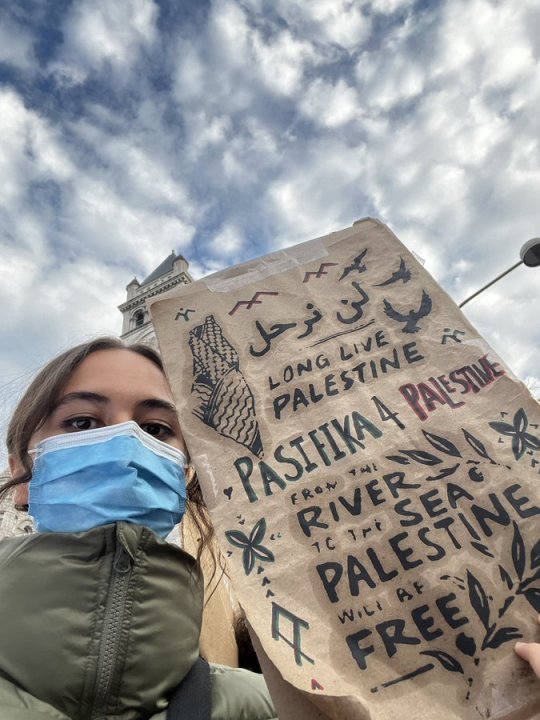
A Pasifika woman holding a sign decorated with Pacific symbols. It says LONG LIVE PALESTINE - PASIFIKA 4 PALESTINE - FROM THE RIVER TO THE SEA PALESTINE WILL BE FREE

Another Samoan fan. This one says PALESTINE WILL BE FREE
6K notes
·
View notes
Photo



Every day praising an indigenous character — Day 30
Angie Yonaga from Danganronpa
Angie Yonaga is a student at the Ultimate Academy for Gifted Juveniles and a participant in the Killing School Semester featured in Danganronpa V3: Killing Harmony. In her promotional artwork, Angie is shown carving a Tiki statue, which is related to East Central Polynesian culture.
Polynesian peoples consist of various ethnic groups that natively speak Polynesian languages, a branch of Oceanic languages, and inhabit Polynesia. Among the most populous variants are the Maoris, Samoans, Tahitians and Tongans.
#Every day praising an indigenous character#Angie Yonaga#Danganronpa#Polynesian#indigenous#native#Native characters
13 notes
·
View notes
Text
4 Artist Examples
Tatiana Tavares:

Originally from Brazil and living in Aotearoa New Zealand, Dr. Tatiana Tavares has won numerous awards for her illustration and design across Australia, New Zealand, the UK and the US. From a fifteen-year career in advertising and graphic design, Tatiana received her MA (2011) and PhD (2019) in Art and Design from AUT – Auckland University of Technology, New Zealand. She is now a Senior Lecturer in Communication Design at AUT University, where she teaches at the undergraduate and postgraduate in the subjects of graphic design, illustration, narrative studies and contextual theory.
She is a practicing artist and a scholar that examines the intersection between decolonial storytelling and media language. Her artistic doctoral thesis is concerned with the potentials of polyvocality and interactive digital narrative. Her subjects involve practice-led research methodologies, Latin American syncretism in artistic and literary form, magical realism, and emergent technology. Her design practices cross graphic design, creative writing, illustration, prop making, film, sound design, AR technology and animation. Tatiana is a research associate for Cultural Spaces and Design in partnership with HyperWerk Institute – Basel, Switzerland. She has been recently appointed as a researcher collaborator in a number of research projects with the Te Arai research group (Palliative Care & End of Life Research) — School of Nursing (University of Auckland).
Marco Steagall:

Marcos Mortensen Steagall is an Associate Professor in the Communication Design department at the Auckland University of Technology - AUT, where he started in February 2016. He is the Communication Design Postgraduate Strand Leader and Programme Leader for Communication Design and Interaction Design for Year 3. He holds a Master's (2000) and PhD (2006) in Communication & Semiotics acquired from The Pontifical Catholic University of Sao Paulo, Brazil, and a PhD in Art & Design from Auckland University of Technology in 2019. My research interests are connected to visual semiotics; practice-oriented research methodologies in Art, Design and Technology; Lens-based image-making and indigenous epistemology. I Supervise both Master's and PhD students and have supervised both to completion.
Talita Toluta'u:

Talita Tolutau PhD thesis project Veitalatala: Matala ‘o e Talanoa is concerned with representation, considering the nature of a culturally located narrative form called Veitalatala and its creative translation into film and Ngatu prints. The designed outcome of this project considers the memories of Tongan women who left their homeland to settle abroad.
The work is a creative synthesis of those women’s talanoa, into a new form of documentary and Ngatu prints that is designed to capture the cultural and emotional resonance of their stories. Veitalatala: Matala ‘o e Talanoa orchestrates photography, animation, sound design, filmed footage, and extensive post-production research into a unique text that seeks to move the parameters of documentary beyond the visual interview. In doing so, the research draws heavily on Tongan paradigms of narrative and representation
David Sinfield:

Dr David Sinfield has been a Lecturer, Academic Leader and Creative Director in the Graphic Communications Design field for over 30+ years nationally and internationally. As a practicing Graphic Designer and Art Director David's practice is located in the field of designing and making printed artworks, moving image graphics, documentary film making and shorts such as the poem film. Structured around practice led research it considers artistic works such as Graphic Design, Communication Design, Typography, Photography, Documentary Film Making, AR & VR, Mobile Technology, New and Emerging Technology and Moving Image (film poetry, short film). His research underpins a series of poetic typographical projections such as the short films, film poem, documentary film making, typographical publications and typeface designs. It extends the concept of the portrait beyond a purely visual representation of identity by fusing typography, narrative, location imagery, sound and paralinguistics. In so doing, it demonstrates how certain concerns of graphic design might be employed to draw attention to the human condition. Furthermore it creatively expands on discourse surrounding typography as emotive by considering the erosion and decay of letterforms as generative of meaning. Further studies has led to the animated exploration in typography to capture the human condition, whether as film titles, or animated monologues, or as political commentaries on urban decay.
0 notes
Text
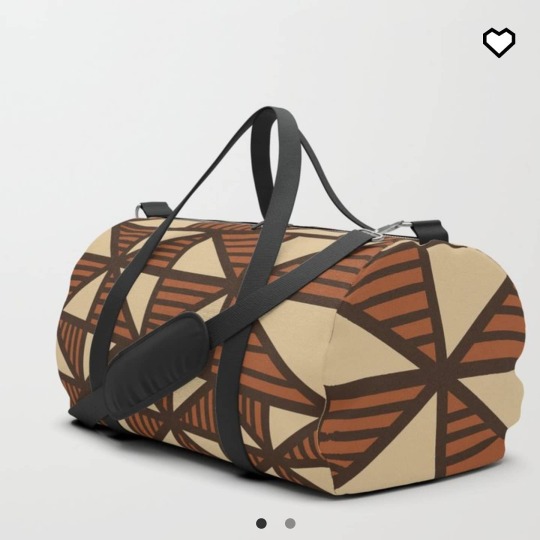

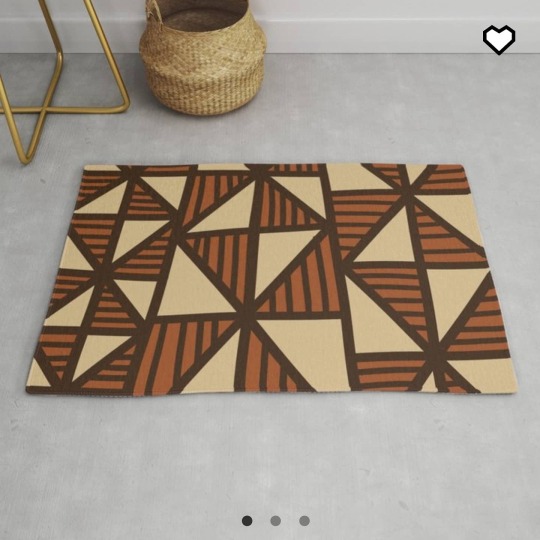
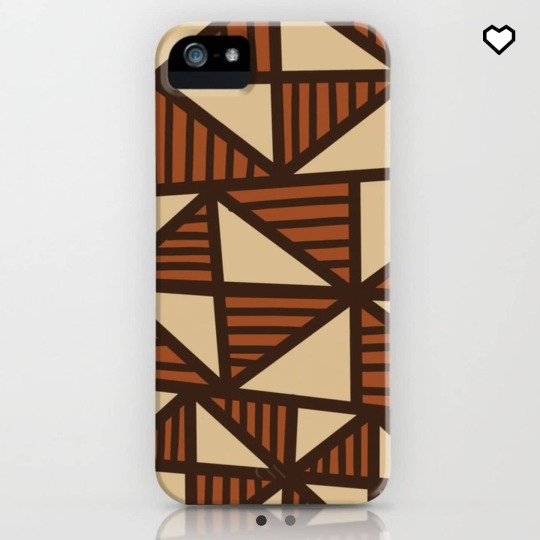
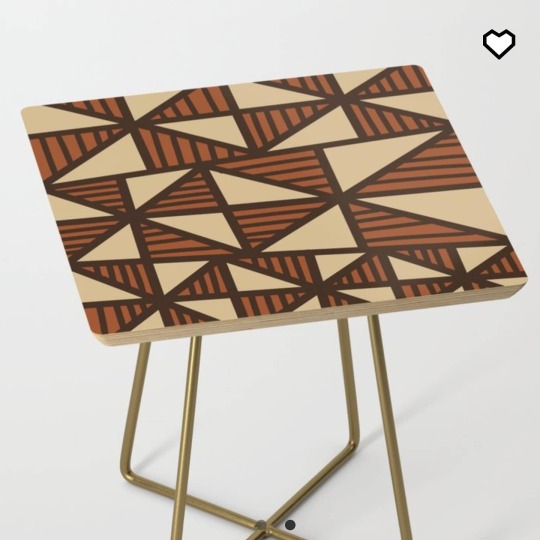
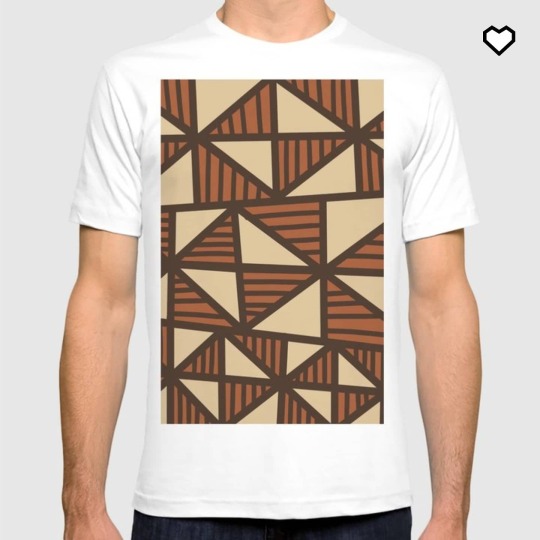
UrbanNesian Tongan Manulua design available on various goodies at ShopUrbanNesian.com
#UrbanNesian #manulua #tongan #tonga #ngatu #kapesi #tonganngatu #tongankapesi #tonganmanulua #tongandecor #tongandesign #tonganprint #tonganpattern
#urbannesian#polynesian#manulua#tongan#tonga#tongan design#ngatu#art#poly#tongan print#tongan art#tongan artwork#tongan manulua#tongan ngatu#urban nesian
16 notes
·
View notes
Text
undefined
instagram
#samoa#polynesia#island art#art#samoan#tribal#polynesian#tawshlav#afatasi#artwork#sale#etsy#shopping#shoppingonline#discount#blackfriday#blackweekend#hawaiian#fijian#tongan#tahitian#maori#canvasart#etsyseller#etsyshop#tattooart#tattoodesign#tattoo#moana#maui
13 notes
·
View notes
Text
Days 2 and 3 in London
I’ve finally finished posting photos from the New Zealand trip, so now I can post about London! There’s somewhat less to report here, in the sense that I’ve been to London many times (we have family here), so we haven’t done a whole ton of sightseeing.
Not much happened on the first day other than arrival, unpacking, and dinner, which I already posted about.
Day 2: We got up pretty early and were at the Tate Modern by about 10:15 for the Dorothea Tanning exhibition. For those of you not familiar with her, she was a surrealist whose work my mother and I find really fascinating. She died in 2012 at age 101. This was a pretty large exhibition of about 100 of her artworks: drawings, paintings, lithographs, designs for ballet costumes (apparently she worked with Balanchine), soft sculptures, and an installation, in addition to a film someone made about her (and with her) in the 1970s. The exhibition was excellent, spanning her entire career. I saw many pieces that I had seen pictures of in books but never seen in real life (one was much smaller than I had imagined), and some that I had seen in real life but was glad to see again.
Then we had lunch, and my parents returned to the museum to see other collections while my cousin and I went for a wandering walk, window-shopping, browsing, and occasionally buying things. We met up with my parents again for dinner in the restaurant downstairs from our hotel.
Day 3: I had slept really poorly. But my cousin and I went to Spitalfields, Shoreditch, and Brick Lane, where we wandered a lot, ate lunch from pop-up stalls, browsed lots of interesting design/artisan/crafts-y stalls and shops, ate a gourmet doughnut from Crosstown (sourdough, with strong Sri Lankan cinnamon and sugar on the outside; I also bought one with Tongan vanilla bean glaze for tomorrow). And I also bought chocolate! I think I had read about Dark Sugars in a travel magazine (unless someone had posted about it here?), so I was very happy that we stumbled upon it. The chocolate is excellent; it’s a business owned by West African-Londoners, and they were playing West African music in the shop. I think they have direct relationships with the cooperative of farmers that grow the cacao the chocolate is made from.
Eventually we came back to the hotel and then took the tube with my parents to a restaurant for dinner, where I accomplished another of my goals for the trip by having Eton Mess for dessert. (I ate a lot of sugar today...) Then we went to the theatre for an adaptation of The Twilight Zone, written by one of my father’s former students. It was... well, bizarre. Parts of it were very scary for me, while a lot of it was hilarious. I’m slightly worried about whether I will be able to sleep tonight!
My cousin is going home to Manchester tomorrow, so we said goodbye after the play. Tomorrow afternoon my parents and I are going to another museum and then visiting my aunt and uncle.
7 notes
·
View notes
Photo

Here’s something kinda funny: I am creeeeeeeped out and grossly terrified of cephalopods 🦑 and yet I really enjoy drawing them. I don’t want to be anywhere near them but I do think they’re badass on paper. Weird, I know... Here’s another 8x8 inch canvas available at my Etsy shop. Link in my bio 🐙 #illtakespidersoversquid #tentacles #eye #squid #octopus #tattooart #tatau #art #design #tribal #cephalopod #octopustattoo #tattoodesign #samoa #samoan #polynesian #polynesia #hawaiian #tongan #tahitian #maori #fijian #original #artwork #canvas #etsy #etsyshop #etsyseller #tawshlav https://www.instagram.com/p/BqWMWv5A9fF/?utm_source=ig_tumblr_share&igshid=92sxtjc4fecl
#illtakespidersoversquid#tentacles#eye#squid#octopus#tattooart#tatau#art#design#tribal#cephalopod#octopustattoo#tattoodesign#samoa#samoan#polynesian#polynesia#hawaiian#tongan#tahitian#maori#fijian#original#artwork#canvas#etsy#etsyshop#etsyseller#tawshlav
1 note
·
View note
Text
Uili Lousi is international contemporary visual artist. Born and raise in the Kingdom of Tonga. His work entices a blend of Tongan Culture, personal experience and first person stories to convey impacts of climate change in the South Pacific.
Based in New York, Tonga and New Zealand, his practice mirrors all his experiences. where he explores the space in between to create vibrancy and current of potent energies. He is able to abstract rhythm, harmony, motion and non-motion. His transition form traditional to contemporay and abstraction allows a visual matrix of processes.
'My mediums are diverse perspex, painted glass, sculpted oil, 3D Tapa, canvas.
Some of the works you see here are painted on Tapa cloth (a non-woven fabric made in The Kingdom of Tonga from pulverized mulberry tree), and then mounted on to canvas. Tapa is slightly textured giving the works a beautiful lift of quiet light.'
0 notes
Text
PRECEDENT RESEARCH
RELATED TO PACIFIC SISTERS PARTICULAR MODES OF PRACTICE, DISPLAY AND EXCHANGE
FAFSWAG:
Fafswag is an Auckland based collective of 10 celebrating queer pacific islander culture. They celebrate this through parties, events and some stunning video work. They are at the front line of fighting the moral restrictions on love, rigid gender binaries and political oppression. Besides all the crazy good times and impeccable style they are a group of artists working to navigate a particularly complex cultural landscape.

https://i-d.vice.com/en_au/article/59ga5d/fafswag-is-the-auckland-collective-celebrating-queer-pacific-islander-culture - A FAFSWAG family portrait. Image courtesy of the group.
Pacific Islander culture is unique in how it has historically both embraced and erased LGBTQ experiences. There is a widely recognised a third gender —sometimes called Fa'afafine, Fakaleiti, Fafine, Akavaine, Mahu or Takataapui — for individuals who are called male at birth, but raised as female. Sometimes people of this identity are celebrated, sometimes they're not. Either way, the transgender experience is a familiar part of Pacific Islander culture. Unfortunately, this doesn't extend to gay, lesbian or bisexual individuals. Being a L,G,B or Q is often still seen as a sin in a community where the church casts a long shadow. For many queer Pacific Islanders, the dichotomy makes it difficult to understand where they belong. That's where FAFSWAG comes in.
SOME ARTISTS:

Akashi Fisiinaua: Tāmaki Makaurau
AKASHI is an Indigenous Trans Political Artist of Tongan origin whose background is acting and dance – that uses the forms of vogue movements and chanting in her practice to empower indigenous queer/trans brown bodies into upholding themselves physically, financially and spiritually strong. Her medium is the B O D Y to communicate these ideas of self-sovereignty and not needing anyone to fill up your glass. Her work is always oozing in body politics, and the importance of CONTROL of your life.

Jermaine Dean: Tāmaki Makaurau
Jermaine Dean is a contemporary digital artist whose practice consists of photography and moving image. Ideas around gender identity, body politics, colour and surreal fantasy influences his visualconcepts which are all conveyed through pixel manipulation. Jermaine has been a member of FAFSWAG since 2012, and has exhibited work in Fresh Gallery Otara, ArtSpace and Auckland Pride Festival. He has collaborated with many indigenous artists within NZ and abroad.

Manu Vaea: Tāmaki Makaurau
Manu Vaea is an interdisciplinary artist currently completing a Bachelor of Visual Arts at AUT TeWananga Aronui o Tamaki Makau Rau. His practice revolves around the exploration of Polynesian mysticism, and the mundanity/complexity of existing as a queer Tongan living in South Auckland through poetry and illustration. Manu has been involved in many collaborative projects, one being 'Statuesque Anarchy' in Enjoy Public Art Gallery alongside collective WITCH BITCH and poetry devised theatre shows 'Loud and Queer' directed by Sarah Jansen and 'Mouth:Teeth:Tongue' directed by Grace Taylor. Vaea is also an active member of arts collective FAFSWAG and has been since 2016.

Moe Laga: Tāmaki Makaurau
Moe Laga-Fa’aofo is a Performance Artist from South Auckland, Whose practice includes movement and activation. Her works include a large number of stage and screen productions, as well as collaborative visual arts work that have been shown in Australia as well as the Pingyao International Photography Festival in China. Moe has a diploma from the Pacific institute of Performing Arts and recently completed her Bachelors in Creative Arts from the Manukau Institute of Technology.

Pati Solomona Tyrell: Tāmaki Makaurau
Pati Solomona Tyrell is an interdisciplinary visual artist with a strong focus on performance. Utilizing lens-based media he creates visual outcomes that are centered around ideas of urban Pacific queer identity. He has shown work at Fresh Gallery Otara, PAH Homestead, Museum of Contemporary Arts Australia and most recently at the Pingyao International Photography Festival. Tyrell is a co-founder of the arts collective FAFSWAG. He is a recent graduate of the Bachelor of Creative Arts programme at the Manukau Institute of Technology, Otara. Pati is originally from Kirikiriroa, Waikato but is now based in Maungarei, Tāmaki Makaurau.

Sione Monu: Tāmaki Makaurau
Sione Monu often uses Instagram (visit @sione93) as an art tool, constantly creating artworks that utilise the platform as a way of re-indigenising space as well as create accessibility for his community to engage with the works. His series of self portraits #BlanketCouture (2016) came to life due to a day of play but with only having access to the materials in his home. Although playful the use of blankets are on the artists’ body are striking and intimate is the artist challenges notions of representation and gender.

Tanu Gago: Tāmaki Makaurau
Tanu Gago is a visual artist and award winning photographer of Samoan heritage. Born in Samoa and raised in Mangere. Gago works as a new media artist with a portfolio of work that includes, staged portraiture, moving image and film. His practice is collaborative and imbedded within contemporary context that relates to cultural framing, decolonization, social politics, queer activism and gender and sexually diverse narratives. Gago is the cofounder and creative director of Pacific LGBT Arts Collective entitled FAFSWAG. Under Gago’s direction FAFSWAG have carved out credible cultural space within the contemporary arts scene within Auckland. The work achieved by this collective of artist spans over 5 years of producing art, activation, activism and visibility for a community traditionally marginalised socially and institutionally.

WITCH BITCH: Tāmaki Makaurau
WITCH BITCH came about through the constant talanoa had between the artist's regarding Polynesian spirituality and how they sit within it. This is further explored and manifested through the trio's activations. As such, WB’s pieces speak to their reclamation of space within the Vā. The contextual and metaphysical space that exist between all things. Their activations in turn serve as a vessel for the re-writing and imagining of queer Polynesian spiritual experiences. The trio's familiarity in regards to living in diaspora also works in tandem with this exploration of spirituality as a drive towards a cultural discovery of self.
Formed around a core team of artists, the collective works to create a queer space within the Islander identity and and call out restrictive cultural narratives. For the past four years they've done this through films, art, music and an epic annual voguing contest known as the FAFSWAG ball.
In an interview i-D spoke to member Tanu Gago about what it means to be an LGBTQ Pacific Islander, and how art and partying can make the world a much warmer place -
Before we talk about FAFSWAG, can we chat a bit about the Pacific Islander LGBTQ experience.
ANSWER: It has remained largely invisible for a majority of our recorded cultural history; most of the text that states otherwise has been destroyed or augmented through the process of colonisation. The only remanence of any gender or sexual diversity has been epitomised through the cultural framing of our third gender population. It's the only culturally acceptable deviation from western gender and sexual norms that's widely embraced in the Pacific, but not without incident, contention or western distortion.
Do you feel you have a defined group mission?
ANSWER: FAFSWAG emerged out of a lack of formal social spaces for people like us to access. We are outcast as society's undesirables and slapped with dual minority statuses as queer and brown people. For this reason it's been important to carve out a place for our stories and for us to facilitate meaningful connections with our creative peers. It just turns out that the very nature of doing this has huge political impacts.
Often there is this sense that queer groups exist to educate or engage the hetero world on LGBT issues. Do you feel you have a responsibility to that wider conversation?
ANSWER: There's a hangover that sees our communities framed by mental illness, sexual deviance and our prevalence for sexually transmitted infections and new HIV transmissions. Our identities are constantly being cranked through a filter, and it's not a flattering Instagram filter! The heteronormative moral majority is always creating uneducated and misinformed stereotypes that make it easier to discriminate against people who are different. So yeah, we do have a responsibility to keep people in check and be part of a wider discussion. But it doesn't have to happen on their terms. We have to say no to your pantomime caricatures of our complex identities, no to your to your legislation that treats us like illegal citizens in our home, no to your moral restrictions on love, no to your rigid gender binaries and transphobia, no to your political oppression and social deprivation and no to your shitty art!
Can you tell me how the vogue scene and your vogue balls play in this?
ANSWER: New Zealand youths have become enamoured by the New York Ball and Vogue scene of marginalised African American LGBTQI communities. The underground Vogue scene in this country is really young and is still something that happens on the fringes and margins of society. For the past four years we've produced a community based Vogue Ball in Otara South Auckland. In the beginning we made so many mistakes and had to really educate ourselves about the culture. This meant working collaboratively with legendary people in the scene like Mario Faumui, Jaycee Tanuvasa and Darren Taniue.
Fafswag has similar qualities and beliefs as Pacific Sisters in both their art and overall goal of inclusivity. The use of multimedia is present in both collectives work as they celebrate Pacifica culture, all aspects of Pacifica culture. Although Fafswag tends to use more video work and focuses more on the LGBT community in Pacifica culture and Pacific Sisters are more about general inclusivity with Pacifica culture and Pakeha culture they still have very similar themes and ideas about how Pacifica people are perceived in today’s society.
0 notes
Photo


Tevita Lātū
Reference
-Interactive, ISite. "Tongan Artists Rock Wellington Art Scene." Welcome to SPASIFIKmag.com. Accessed June 11, 2019. http://www.spasifikmag.com/publiceducationpage/15septtoganartstsrock/.
-Seleka Art & Youth Initiative. "A Few of the Artworks Presented by Our Founder Tēvita Lātū at Our Booth at the Tonga Royal Agriculture Show Pic.twitter.com/m8k3kr5LUF." Twitter. August 03, 2018. Accessed June 11, 2019. https://twitter.com/selekatonga/status/1025311665875648513.
0 notes
Photo



Operates in similarly to lashing indicating the strong connection between the time and space. The togetherness in fabric paint and carving into the material which link and than separated again in being tradition and non-traditional. To disregard the way of thinking of the mixing process of painting. The appearance of the artwork is the characteristic of the artist. As master painter will not hold back from being creative and for those less who do provide less uniqueness which I may see myself now. Unusual status in art making being strong point of view of traditional or remarkable cultural art crafting. To reform a way its never been seen before or it has been seen but why is it seen as ART?. This would describe myself as creative with traditional materials and thinking traditional making but why is it so hard to let go and be more contemporary practices as my mother is my master in the making of traditional crafting. Expert in judging artworks from a side line is more freedom say about theirs than your own but not an expert in making art look so deformed. The art conversations is what we Tongans call talanoa fascinating form of discussion in the pacific boundaries, sharing stories in public and private spaces. The connection that follows by the distances of your own-selves and community will have an impression on the way we make art. The relative scales minimizing the importance of being and living in a cultural space.
0 notes
Photo

The Sioux-Pacific artistic connection
Sharing knowledge is one of the reasons Brown Eyes-Kaho, 26, was keen to visit New Zealand. A photographer and bass player in Scatter Your Own - the band she started with her husband, Scotti Clifford - she uses art and culture to highlight indigenous issues and bring about positive change.
The residency is for an artist outside New Zealand and is offered every two years, providing the recipient with return airfares, accommodation and a stipend. Described as the "gift of time", artists get to meet and interact with the local art community, visit galleries, libraries and public institutions for research and to participate in events in Auckland during February and March.
Brown Eyes-Kaho has been exploring Tongan arts and thinking about what a fusion of her two cultures might look like.
"I'm excited to explore the possibilities of interweaving my Lakota knowledge of traditional artwork with Tongan practices of the tapa cloth, to learn the meanings and importance of the symbols, to feel the pride as I wear my own tapa cloth someday. I feel fulfilled and blessed and rich. My grandmother taught me how rich our Native American culture is and now I feel I have doubled that."
#Tonga#Juliana Brown Eyes-Kaho#Art#The Red Road Project is so cool#The photography is beautiful!!#Pasifika#Native American#Indigenous#Sioux
46 notes
·
View notes
Text
How the Samoan Tattoo Survived Colonialism

Within the 1800s, a chief within the South Pacific archipelago of Samoa sought medical assist from a Christian missionary stationed there. The missionary, a Scotsman by the title of George Archibald Lundie, urged the chief to resign his conventional non secular beliefs. Finally, the chief agreed, however he postpone professing a change in his religion till after his son obtained a pe'a tattoo, inked from mid-torso to knees in a ritual that sometimes takes many days.
The story of Lundie and the chief hints at how Samoans saved their tattoo custom, referred to as tatau, alive regardless of outdoors pressures. As missionaries unfold throughout the South Pacific throughout the 18th and 19th centuries, they tried to wipe out native tattooing traditions--and broadly succeeded. However they failed in Samoa, the place males historically obtained markings referred to as pe'a, and girls bought thigh tattoos referred to as malu.
Immediately tatau has made forays into different cultures whereas retaining its conventional Samoan aptitude, and its affect stretches nicely past its native islands. Samoans have primarily migrated to the US, New Zealand, and Australia, and folks of Samoan ancestry now use tattoos to attach with their roots. Tatau masters have visited a wide range of nations to create their distinctive artwork for shoppers, each Samoan and non-Samoan, together with different Pacific islands the place they've helped revive misplaced tattoo practices.
"It's amazing persisted," says anthropologist Sean Mallon, the senior curator of Pacific cultures on the Museum of New Zealand Te Papa Tongarewa. "I can't believe it, in a way."
Many attainable causes can clarify the apply's resilience. As with tattoos the world over, tatau's energy rests partially in how numerous teams learn and acknowledge these markings. Historically, Samoan tattoos marked maturity, which got here with particular privileges. Christian missionaries, once they got here to the archipelago, by no means caught on to the ceremony's non secular dimension, in order that they did not understand it as a direct menace to their church buildings. Consequently, tatau persists right now, and its that means has solely broadened with Samoan migration.
The tatau custom goes again 3,000 years. However when missionaries first encountered it, two centuries in the past, they thought of it a "savage and heathen practice," says Mallon. Because of tattoo taboos, some Samoans risked fines or banishment for getting inked.
As an illustration, the London Missionary Society, which arrived on Savai'i Island within the western a part of Samoa in 1830, banned tatau in some areas as a result of it disapproved of the partying that always accompanied the method. However island geography helped thwart their efforts, notes Sebastien Galliot, an anthropologist on the French Nationwide Centre for Scientific Analysis, Centre for Analysis and Documentation on Oceania in Marseille, France.
Samoa is an archipelago, comprising a number of islands and islets. On the time, it had a "decentralized system of chieftainship," says Galliot. The society transformed a couple of villages, however others had been comparatively unaffected. That truth gave tatau loads of area for continued apply.
When chiefs in jap elements of Samoa banned tatau within the 1860s, younger males traveled to the western finish of the archipelago to get tattooed, although it meant they could not go house. They had been allowed again by the 1890s--provided they paid a wonderful.
In the meantime, Catholic missionaries, who arrived in 1845, ended up accepting the tatau custom. They despatched a letter to church leaders in Rome, arguing that the apply wasn't non secular, and obtained dispensation to permit tattooing amongst converts.
However the Catholics could have been mistaken, explains Galliot, who collaborated with Mallon on a historical past of tatau. In reviewing historic paperwork, Galliot found that a native shrine was linked to the legendary sisters, Taema and Tilafaiga, who're credited with bringing tatau to Samoa. That connection, says Galliot, was "a point that none of the missionaries had actually figured out."
Because of these diverse elements, Samoans held on to tatau at the same time as they broadly adopted Christianity. The truth is, some Christian leaders now embrace tattooing. In fashionable Samoa, a pastor or preacher usually kicks off the tattooing course of by sanctifying the place the place it can occur. Mallon notes that his uncle, who was a priest in Samoa, had a pe'a.
Different elements are additionally at play in tatau's survival. Present process the ritual gave Samoans issues they weren't prepared to surrender for the missionaries' God: standing, proof of power and braveness, and improved desirability to potential companions.
The pe'a is a vital ceremony of passage in Samoan communities that grants a person grownup standing and the best to carry out sure duties for the village chief. "You're not respected without your tatau," explains Si'i Liufau, a Samoan tattoo artist in Backyard Grove, California. "You have to have a tatau to be a full man." Immediately many individuals save up till midlife to afford the costly ritual.
For girls, the malu additionally brings privileges. For instance, tattooed ladies can serve ceremonial drinks or gather items at a funeral. Some ladies now get the malu to mark life occasions reminiscent of college commencement or a job promotion.
Anthropologists have discovered that throughout numerous cultures, tattooing is a option to promote or emphasize one's identification. Tatau follows the sample. "Tattooing is still something important in a man's life or in a woman's life in terms of marking their belonging to the community," Galliot says.
To many individuals of Samoan ancestry residing all over the world, tatau supplies a way of connection to their ancestral islands. As an illustration, it helps folks determine as Samoan versus different teams reminiscent of Maori or Tongan.
Liufau, who grew up in Southern California, found Samoan tattooing in his 20s. Tatau introduced him again to Samoan traditions and language as he skilled to carry out the ritual himself.
"This is something we've had since the beginning of being Samoans," says Liufau. "Churches might change, but Samoan culture does not."
This work first appeared on SAPIENS underneath a CC BY-ND 4.zero license. Learn the unique right here.
Read the full article
0 notes
Text
It takes a village #UrbanNesian
#pasifika #samoan #tongan #Fijian #siapo #tapa #masi #ngatu #tatau #village #art #artwork #polynesian

10 notes
·
View notes
